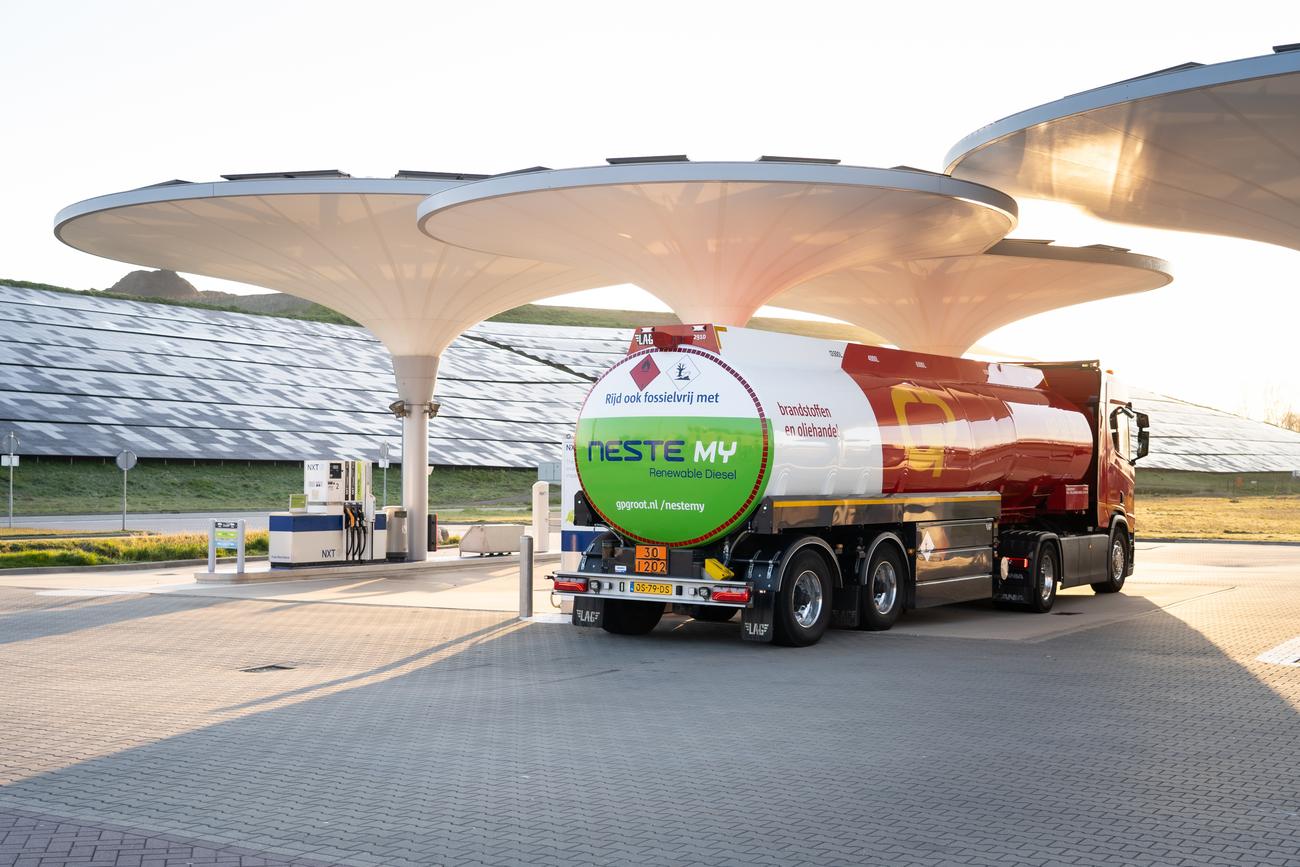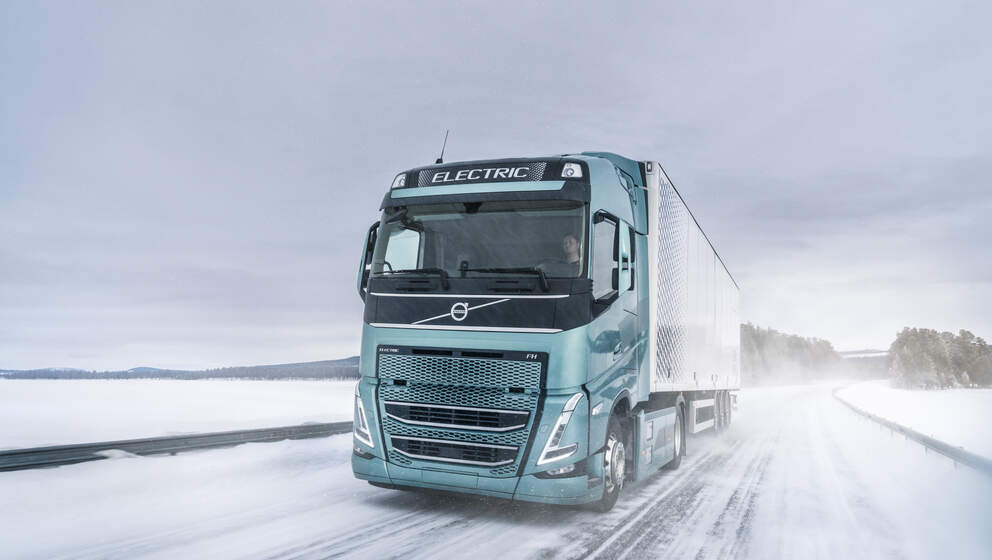Reducing emissions in the road transportation sector requires all hands on deck
As world leaders return from a long and tense negotiation at the COP26 conference, we have for the first time a UN climate deal that explicitly calls out fossil fuels as the key driver of global warming. While this is a major step forward in the effort to keep warming below 1.5C, a significant amount of work remains to achieve that target. This is particularly so in the road transport sector, which alone is responsible for 10 percent of all global emissions and rising faster than any other sector*.
There is no debate that the road transportation sector will play an important part in the climate crisis.
At COP26, more than 100 representatives of nations, cities, states, businesses, and investors signed a pledge to rapidly accelerate the transition to zero-emissions vehicles – namely to work towards all new car and van sales being zero emissions globally by 2040 and 2035 in leading markets. Particularly for this pledge, a zero-emission car or van has been defined as one that produces zero greenhouse gas emissions. Signatories included countries such as the United Kingdom, Norway, Cambodia, and New Zealand, as well as major automotive manufacturers Ford, General Motors, Mercedes-Benz, and Volvo.
In some of these countries, a lot of the hard work to achieve this target has been overcome or is underway. For example, the Norwegian Road Federation reported that almost 80 percent of all new vehicles sold in September 2021 were electric*.
However, in many others, there is a long road ahead, and when we take other road transport beyond light-duty vehicles – i.e. trucks and buses – into consideration, it becomes clear electrification is not a silver bullet and will take a long time to achieve. Furthermore, based on how the electricity is produced – whether derived from renewable sources, such as wind or solar energy, or from fossil sources, such as oil, coal or natural gas – will determine how effective electric vehicles will be in reducing greenhouse gas emissions.
Therefore, instead of relying solely on one solution, we need to take advantage of all available and sustainable solutions, including renewable liquid fuels, to reduce transport-related emissions, and help countries reach their climate targets. And these different solutions should be evaluated on a like-for-like basis.

Singapore making headway on reducing emissions in road transport sector
Despite not being a signatory to the COP26 pledge on electric vehicles, Singapore has already outlined its own ambition to phase out petrol- and diesel-powered cars and vans by 2040, as well as diesel-powered buses in use across its public transport fleet. The infrastructure required to support this transition to electric vehicles is being rapidly rolled out, with the government aiming to have 60,000 charging points nationwide by 2030.
The government is making significant headway towards its goal of reducing emissions in the road transport sector. However, more can be done to shift the dial. While electric vehicles can contribute to lower emissions, there are differences in range, cost and suitability, particularly in a hot climate like that of Singapore, where the extra energy required for air conditioning on electric buses heavily impacts their performance and durability.
For heavier vehicles such as freight and transport trucks, the infrastructure and technology are not yet in place to support electrification and will take significant investments and time to establish. As an important global logistics and transport hub, it will be critical for Singapore to reduce the emissions of this segment of the road transport sector, upon which it relies heavily to enable other major sectors of the nation’s economy, like manufacturing and wholesale trade. With ambitious global climate targets to meet in less than 10 years, it is also important that urgent, immediate action is taken to ensure emissions are reduced in this sector.
It is clear that a wide range of solutions, including hydrogen and renewable fuels, are needed alongside electricity to reach the targets set out in Singapore’s Green Plan 2030. While the right mix of solutions will be specific to the needs and environment of each country, some of these solutions are ready for acceleration in the Asia Pacific region.
Renewable fuels for example, are already available in the market and can be used in existing cars and trucks - as well as planes and ships - without needing to alter or update the engines. Produced from renewable raw materials, like waste and residues e.g. used cooking oil or animal fat waste from the food industry , renewable fuels have been around for over a decade and are a proven solution for all modes of transport. Most importantly, they are able to substantially reduce transport emissions.

The use of Neste MY Renewable Diesel, can reduce greenhouse gas emissions by up to 90 percent compared to fossil diesel over the life cycle of the fuel. This makes it a quick and effective tool that is ready for use today, to be used without adjustments in existing diesel engines, while the necessary technology or infrastructure for other renewable solutions are being developed and rolled out.
Collaboration is key to a sustainable future
While renewable fuels may be one “plug-and-play” solution, the real key to emission reductions in the road transport sector is collaboration. Governments, businesses and research institutes each have a role to play and must partner together to tackle the challenge.
As we saw from COP26, governments are critical to creating the enabling conditions for business and society to fight climate change. In line with national commitments, the implementation of policies and regulation that incentivise or mandate more sustainable solutions aligns the expectations of how businesses operate. It also encourages companies, entrepreneurs, and organisations like research institutes to develop sustainable new solutions, products, and markets.
In parallel, companies have the responsibility and the opportunity to stay competitive by transforming their business to become more sustainable. The private sector is playing – and is expected to play – an increasing role as a change-maker. This is being recognised by governments and the nonprofit sector alike, leading to a range of collaborations between the public and private sectors.
Neste has decided to establish an R&D centre in Singapore to drive collaboration in the Asia-Pacific region and especially in Singapore. Establishing the new R&D center in Singapore with advanced analytical and raw material research capabilities allows Neste to work closely with partners, customers, and even governments to accelerate the growth of sustainable solutions that can complement and support the work currently underway to reduce emissions.
Ensuring we remain below 1.5C is a difficult task, but significant progress has already been made. By leveraging all available solutions and enabling closer collaboration between the public and private sectors, we can achieve even greater progress on the road to decarbonisation.



